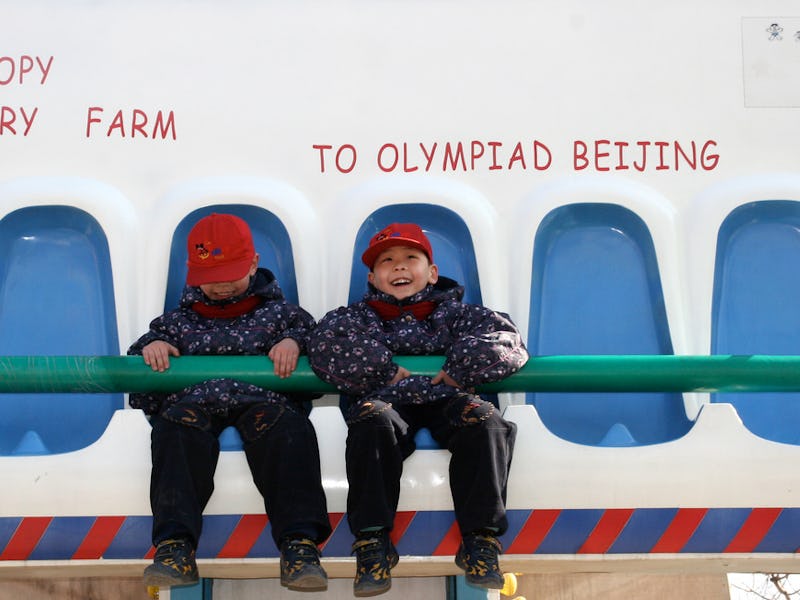China Is Finally Ending Its One-Child Policy
The decades-long ban on multiple children has led to economy-threatening gender and age imbalances.

After 36 years, the Chinese government is lifting its one-child policy. Quoting an official Communist Party statement, the news agency Xinhua reports that all couples will now be allowed to have two children. Accelerating the birth rate is thought to be the government’s remedy for a rapidly aging populace.
China introduced its ban on having multiple children in 1979 to curb its accelerating growth rate and growing population, which, at the time, was already at 975 million — three times the current U.S. population. Since then, the one-child policy has prevented an estimated 400 million births. Still, at roughly 1.35 billion, China’s current population is the largest in the world.
There’s strength in numbers, but only people fit to work can fuel China’s growth. Currently, 30 percent of the country’s population is over the age of 50. Economically, they’re a liability, and it’s crucial to ensure that they can be replaced.
Children in September 2015 in the Zhengzhou, Henan Province of China.
China’s deepening gender imbalance — another consequence of the one-child policy — also factors into the country’s lagging birth rate. The traditional preference for sons over daughters has led to a surfeit of 25 million men, who, in theory, will be unable to contribute to the next generation.
Relaxing the rules will not only boost the country’s population but also, hopefully, bring an end to the abortion of female infants and prohibitive fines to families wishing for a larger brood.